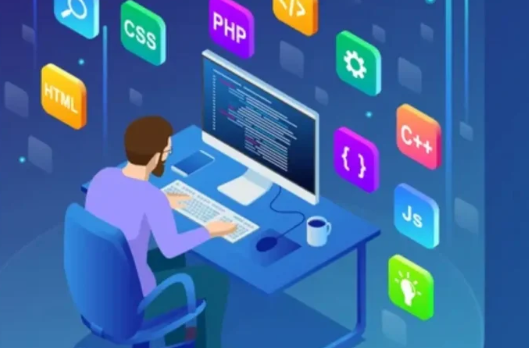The Ultimate Guide to Web Design & Development in 2025
In today’s digital age, a compelling online presence is vital for any business or individual looking to thrive. At the heart of this presence is web design & development—a combination of aesthetic creativity and technical functionality that brings websites to life. Whether you’re building a brand from scratch, revamping an outdated website, or creating an e-commerce platform, understanding the principles of web design and development is critical to success.
This article explores everything you need to know about web design and development, including the differences between the two, the core components, current trends, essential tools, and tips for selecting the right service provider.
What is Web Design & Development?
Web design focuses on the visual aspects and user experience (UX) of a website, including layout, color schemes, typography, graphics, and usability. It’s about making a site not only look good but also function seamlessly for the user.
Web development, on the other hand, is the technical implementation of the design. It involves coding and programming to build the site’s structure, functionality, and interactivity. Developers turn designs into working websites using various technologies such as HTML, CSS, JavaScript, and backend languages like PHP or Python.
Together, web design and development ensure that a website is both beautiful and functional.
Key Components of Web Design
1.User Interface (UI) Design
UI design is about how the user interacts with the website. It includes buttons, menus, navigation bars, and any interactive elements. A clean, intuitive interface encourages users to explore and engage with content.
2. Visual Design and Branding
This involves choosing color palettes, fonts, and imagery that align with a brand’s identity. Consistency in visual design builds brand recognition and trust.
3. Responsive Design
With a significant portion of web traffic coming from mobile devices, responsive design ensures a website looks and works well on all screen sizes, from desktops to smartphones.
4. User Experience (UX) Design
UX is the emotional and functional experience of users as they navigate a website. Good UX design focuses on structure, flow, accessibility, and ease of use, ensuring the visitor enjoys their time on the site and can achieve their goals efficiently.
Core Elements of Web Development
Front-End Development
This is the part of the website users interact with directly. Front-end developers use HTML, CSS, and JavaScript to build the layout and interactive features. They work closely with designers to bring visual elements to life.
Back-End Development
Back-end development involves server-side logic, databases, and integration. It’s the engine that powers the website behind the scenes. Languages like PHP, Ruby, Python, and Java are often used here.
Content Management Systems (CMS)
CMS platforms like WordPress, Drupal, and Joomla allow non-technical users to update and manage website content easily. Developers often customize these systems to fit specific business needs.
Web Hosting and Domain Management
Web development also encompasses selecting a reliable hosting service and managing the domain name, both essential for keeping the website accessible to users worldwide.
Why Web Design & Development Matter
A professionally designed and developed website is crucial for:
- Building Credibility – A modern, professional site builds trust with visitors.
- Improving SEO – Clean code, fast loading times, and mobile optimization all boost search engine rankings.
- Enhancing User Engagement – Intuitive design and fast performance keep users on your site longer.
- Increasing Conversions – A strategically designed site guides users toward actions like purchases, form submissions, or sign-ups.
- Providing Competitive Advantage – A standout website helps differentiate you in a crowded digital marketplace.
Emerging Trends in Web Design & Development (2025)
AI-Driven Design
Artificial Intelligence tools are being used to automate design suggestions, personalization, and even content generation, making websites more adaptive and user-centric.
Voice User Interfaces (VUIs)
As voice search grows, websites are being designed to accommodate voice navigation and commands, improving accessibility.
Micro-Interactions
These small animations or design features add personality to a site and guide users subtly, improving engagement.
Dark Mode and Color Themes
Offering different themes, especially dark mode, has become a popular trend for enhancing usability and visual appeal.
Web Accessibility
Ensuring your website is accessible to users with disabilities is not only ethical but also legally required in many regions.
Tools and Technologies for Web Design & Development
1.Design Tools
- Adobe XD
- Figma
- Sketch
These tools help create wireframes, prototypes, and final UI designs.
2. Development Frameworks and Libraries
- React.js, Angular, Vue.js – for front-end interactivity
- Node.js, Laravel, Django – for back-end functionality
- Bootstrap, Tailwind CSS – for rapid and responsive styling
3. CMS Platforms
- WordPress – User-friendly and highly customizable
- Shopify – Perfect for e-commerce sites
- Webflow – Combines design and development in one platform
Best Practices in Web Design & Development
Keep It Simple
Clean, minimalist designs help users focus on content and actions.
Prioritize Speed
Website performance directly impacts SEO and user satisfaction. Optimize images, reduce code bloat, and use fast hosting.
Optimize for Mobile
Design mobile-first or ensure your desktop design scales down smoothly to smaller devices.
Focus on SEO
Structure your site with SEO in mind—use proper tags, meta descriptions, and URL structures.
Regularly Update Content
A fresh website with up-to-date content ranks better and offers more value to visitors.
Choosing a Web Design & Development Partner
Hiring the right agency or freelancer is vital. Look for:
- Experience and Portfolio – Review past projects.
- Client Testimonials – Seek honest reviews.
- Technical Expertise – Ensure they use modern tools and standards.
- Communication and Collaboration – They should understand your goals and keep you involved throughout.
- Post-Launch Support – Ongoing maintenance is essential for updates and security.
One excellent example of a reliable web design and development agency is this Long Island-based company that offers end-to-end web solutions, from concept to launch.
How Much Does Web Design & Development Cost?
Pricing can vary widely based on the project’s scope, complexity, and the provider’s experience.
- Basic Websites: $1,000–$5,000
- Custom Business Sites: $5,000–$15,000
- E-commerce Platforms: $10,000–$50,000+
- Enterprise-Level Solutions: $50,000–$100,000+
Factors influencing cost include design complexity, number of pages, integrations, content creation, and ongoing support.
See Also: How Tech Is Redefining Customer Experience
DIY vs. Professional Services
Pros of DIY
- Cost-effective
- Full control
- Quick setup (using platforms like Wix or Squarespace)
Cons of DIY
- Limited customization
- Potential for poor UX/UI
- Less professional appearance
- Risk of poor SEO or security vulnerabilities
Pros of Professional Services
- Custom design tailored to your brand
- SEO and mobile optimization
- Better security and performance
- Strategic input for conversions and growth
Cons of Professional Services
- Higher upfront cost
- Dependence on developer for updates (unless CMS used)
Web Design & Development Case Study: A Small Business Transformation
Let’s consider a local bakery looking to grow beyond walk-in customers. They hire a web development team to create a mobile-optimized, e-commerce-ready website with integrated social media and local SEO.
Results after 6 months:
- Increased traffic by 150%
- Online orders grew by 220%
- Google ranking improved to Page 1 for local searches
- Customer engagement doubled
This showcases how strategic web design and development can directly impact growth and revenue.
Future Outlook of Web Design & Development
As technology evolves, so too does the web. Future trends may include:
- More immersive experiences with AR/VR
- Hyper-personalized content driven by AI
- Increased integration with smart devices
- Blockchain-based websites for enhanced security and transparency
The key to staying competitive is constant learning and adaptation.
Conclusion: Crafting a Winning Web Presence
Web design & development is more than just creating a digital brochure—it’s about delivering experiences, building relationships, and driving success. From visual appeal to backend stability, every component plays a critical role in the user journey.
Whether you choose to go DIY or hire a professional, remember that your website is often the first impression people have of your brand. Invest wisely in your digital presence to ensure it reflects your values, engages your audience, and supports your long-term goals.
Looking to get started with a trusted partner? Consider exploring web design & development services tailored to your business vision.






